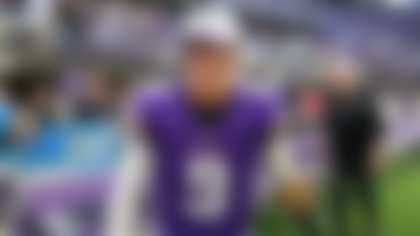After 10 months of negotiations, some very public player splintering, a little last-minute tinkering and even the election of a new union president, the NFL has a new collective bargaining agreement that will govern its relationship with players for the next 11 years. The agreement is a sweeping, 400-plus page document. Let's explore what its passage means by examining five crucial questions in the immediate aftermath:
1) First, after so much controversy, why did this pass?
The vote was not public, but it's a safe bet that it passed because the deal was geared to helping "middle class" players who make up the majority of NFL rosters. Sam Acho, a 10-year NFL veteran and player rep who supported the deal, posted a video last week in which he explained why the rank-and-file players were likely to be in favor of the deal despite very public resistance from some of the biggest stars in the game. "Sixty-five percent of players in the NFL last year made minimum salaries," Acho said. "So when you talk about a 20 percent increase effectively year over year, in exchange for one extra game, that's a really good deal."
It also didn't hurt that the players are scattered during the offseason, and the voting was done by secret ballot, perhaps diminishing the influence of the most vocal opponents. The final tally was quite close: 1,019 players voted in favor of the new CBA, 959 were opposed. Another potential factor that might've helped in pushing this proposal across the finish line: the worldwide economic uncertainly spawning from COVID-19.
2) So, 17 games?
Well, not quite yet. The 2020 season will look familiar -- four preseason games, 16 regular-season games -- with one very new feature: The league will add a wild-card team to each conference, meaning there will be two extra games on Wild Card Weekend. And only the top seed in each conference will get a first-round bye. The second seed will play the No. 7 seed in the first round and so on.
The league has a window to add the 17th regular-season game beginning in 2021 and ending in 2023 -- and 2022 seems to be the most logical time, because all of the new broadcast contracts will be in place by then.
3) With an uneven number of games, how will they manage the 17th game?
That still has to be figured out. The likeliest solution right now seems to be having one conference receive the 17th game as a home game one season, and the other conference getting the additional home game the next season. Other ideas have been tossed around -- playing the 17th game internationally or at a neutral site -- but nothing has been decided.
4) How will the league change during the life of this deal?
The 17th game necessitated changes that will affect player development and could show up on the field immediately. Once the 17-game regular season starts, teams will be limited to 16 padded practices during training camp and no more than three in a row. That is a big change from the current padded-practice limit of 28, so expect coaches to have some thoughts on how that will impact preparation. There will also be a five-day acclimation period that will limit the kind of work done at the very start of camp.
No practice can last longer than 2 1/2 hours and players can't be at the team facility for more than 12 hours per day. And there must be a "bye week" after the third and final preseason game before the start of the regular season.
And this is a big one: Teams are not allowed to add padded practices in the regular season once the 17-game seasons start. Under this new CBA, during the regular season, padded practices will be limited to 14, 11 of which must be held during the first 11 weeks. All of that will remain in place even when the 17-game seasons start.
Teams are also getting bigger. The active roster on game day will go from 46 to 48 players, and one of the extra players has to be an offensive lineman. Practice squads will also expand, to 12 players in 2020 and 2021, and to 14 starting in 2022. Two practice-squad players each week can be elevated to the team's active roster, meaning that the roster during the week will effectively be 55. That, the league hopes, will help spread out the wear and tear players incur from the 17th game.
5) What's next for the players' union?
The last few weeks have exposed significant fissures in the NFLPA. At the very least, it is clear that some vocal players do not have confidence in the executive director, DeMaurice Smith.
The players elected JC Tretter as their new president, though, and that might be a positive sign for Smith because Tretter is considered a moderate and ran on a platform of the need for unity in the ranks. Most significantly, he beat out defensive back Michael Thomas, who opposed the new CBA and had the backing of hardliner Russell Okung. The passage of the CBA indicates that the majority of players may still support Smith. Okung's complaint to the National Labor Relations Board remains alive, though, and how that plays out could certainly impact Smith's future.
Follow Judy Battista on Twitter @JudyBattista.












